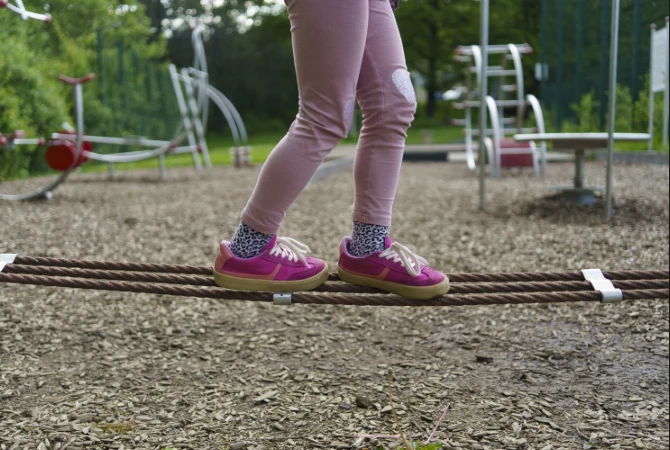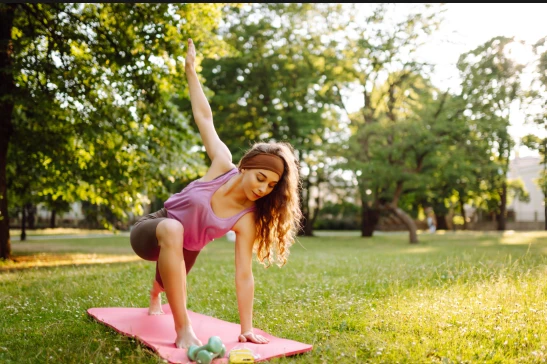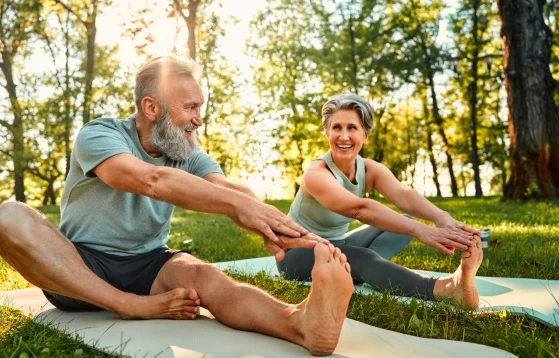Coordination is a fundamental skill that plays a crucial role in our daily activities, athletic performance, and overall health. Whether you're typing an email, playing a sport, or simply walking, coordination allows your body to move smoothly and efficiently. But how can you improve your coordination to enhance these experiences and achieve your goals? In this blog, we'll break down actionable steps for how to improve your coordination, including strategies for improving hand-eye coordination specifically, and provide expert-backed insights for building these essential skills.
By the end of this guide, you’ll not only understand the mechanics of coordination but also have practical tips to start improving immediately.
What is Coordination and Why is it Important?
Coordination refers to the ability to use different parts of your body together efficiently and effectively. It involves the nervous system, muscles, and senses like sight and touch working in harmony. Examples include throwing and catching a ball, maintaining balance while walking, or dancing. Coordination is not only vital for athletes but also for individuals seeking a higher quality of life.
The Benefits of Improving Coordination
- Better Performance: Whether you’re playing a sport, working out, or performing daily tasks, good coordination can significantly enhance your abilities.
- Reduced Risk of Injury: Well-coordinated movements lower the risk of accidents caused by missteps or clumsiness.
- Improved Cognitive Function: Research suggests that activities that improve coordination can also boost brain health (Best et al., 2010).
- Enhanced Confidence: Confident movement can improve self-esteem in both social and professional settings.
Understanding why coordination matters is the first step to improving it. Now, let's explore how.
Tips on How to Improve Your Coordination
Improving coordination involves targeting various aspects of your physical and mental function. Here’s how you can enhance your skills step by step:
1. Master the Basics of Balance
Balance is the foundation of coordination. Without it, even simple movements can feel off-kilter.
- Try Balancing Exercises: Practice standing on one foot for 30 seconds, and gradually increase the duration. Yoga poses like the Tree Pose are also excellent for stability.
- Use Balance Boards or Stability Balls: These tools challenge your core and engage stabilizing muscles, improving your balance over time.
- Walk in a Straight Line: Start walking heel to toe on a straight path. This simple exercise trains both balance and focus.
2. Focus on Hand-Eye Coordination
Hand-eye coordination is essential for activities such as writing, catching a ball, or playing video games. Here’s how to improve hand-eye coordination effectively:
- Juggling: Start with one ball and add more as you get better. Juggling requires focus and timing.
- Catch and Throw Drills: Throw a ball against a wall and practice catching it. Increase the intensity by standing farther away or using a smaller ball.
- Online Coordination Games: Simulated games on your smartphone or tablet can sharpen your reflexes and hand-eye coordination.
3. Engage in Targeted Sports and Activities
Sports are one of the best ways to enhance coordination skills naturally. Some activities demand high levels of coordination:
- Tennis or Ping-Pong: These sports require precise hand-eye coordination and quick reflexes.
- Dance: Dancing improves whole-body coordination by synchronizing movements to a rhythm.
- Martial Arts: Activities like boxing or karate challenge your coordination through combinations of movement and reaction.
4. Strengthen Your Core
A strong core plays a vital role in maintaining balance and coordination. Adding core-strengthening exercises to your routine can lead to improvement in overall movement.
- Plank Variations: Incorporate forearm planks, side planks, and plank reaches to engage your core.
- Medicine Ball Rotations: Use a medicine ball to perform controlled rotational movements, which engage your core muscles and improve stability.
- Pilates or Yoga: These practices focus on core strength and flexibility, enhancing both balance and coordination.
5. Train Your Reflexes
Quick reflexes help you respond promptly to changing circumstances. This skill is particularly useful for athletes but benefits everyone in daily life.
- Reaction Ball Drills: Use a reaction ball (a ball with an irregular shape) that bounces unpredictably, forcing you to react quickly.
- Video Games: Fast-paced video games that require split-second decision-making can train your reflexes and improve coordination.
6. Use Technology to Track and Improve Progress
Modern technology makes it easier than ever to measure and improve your coordination. Devices and tools can monitor your balance, reaction times, and movements:
- Smartphone Apps: Apps like “Visual Reflex Trainer” or “FitLight Trainer” provide tailored drills to enhance hand-eye coordination.
- Wearables: Fitness trackers and smartwatches can help you monitor physical activities that improve coordination.
- Virtual Reality Systems: VR gaming systems like Oculus offer immersive experiences that blend entertainment with hand-eye and full-body coordination training.
How to Make Coordination Exercises a Part of Your Routine
Making these exercises a regular part of your routine ensures consistent improvement.
Start Small
Begin with 10 to 15 minutes of coordination exercises daily and gradually increase the duration. Focus on one aspect of coordination, such as hand-eye coordination, for a week before moving on.
Combine Fun and Function
Pick activities you enjoy, such as dancing, swimming, or yoga, to make the process engaging. The more fun you have, the more likely you are to stick with your routine.
Track Your Progress
Keep a journal or use a fitness tracker to log your coordination exercises and achievements. Seeing improvement over time can be motivating.
Scientific Backing Behind Coordination Training
The benefits of coordination training are supported by extensive research in both sports science and neuroscience. For example, a study conducted by Granacher et al. (2010) found that balance and coordination training improves neuromuscular function and reduces the risk of falls among adults. Similarly, hand-eye coordination drills have been shown to enhance cognitive function and reaction times (Best et al., 2010).
Why Focus on Coordination Now?
Coordination is a skill that can be trained and improved at any age. Whether you're an athlete aiming for peak performance or an individual looking to enhance your daily life, improving coordination sets the foundation for better well-being.
Your Path to Better Coordination Begins Here
Improving coordination skills is an accessible goal for anyone willing to incorporate targeted exercises into their daily lives. By enhancing balance, focusing on hand-eye coordination, and engaging in activities that require coordination, you can significantly improve your physical and mental abilities.
If you're excited to start your coordination improvement journey, visit our friends at Atecam for evidence-based tools, expert resources, and wellness solutions tailored to holistic development.
References
Best, J. R., Chiu, B. K., Hall, P. A., et al. (2010). The role of executive processes in coordination development. Research Quarterly for Exercise and Sport, 81(3), 314-323.
Granacher, U., Muehlbauer, T., Gollhofer, A., et al. (2010). Effects of balance training on postural sway, leg strength, and standing balance in healthy postmenopausal women. The Journals of Gerontology Series A, 65A(12), 1192-1198.



